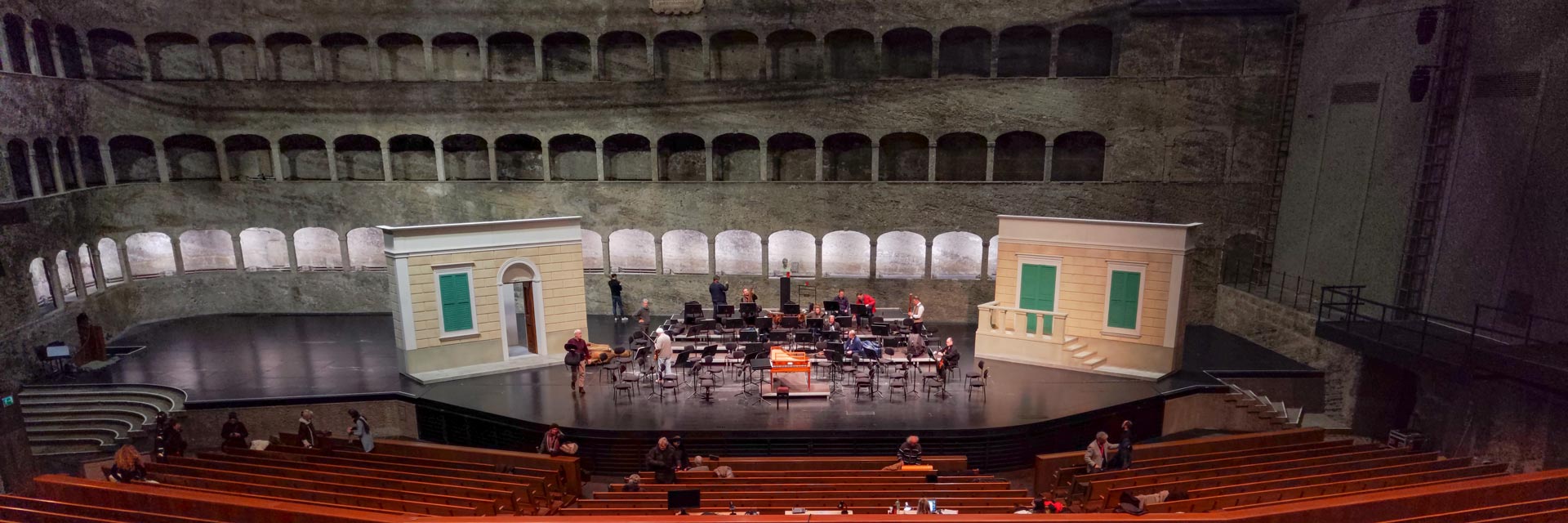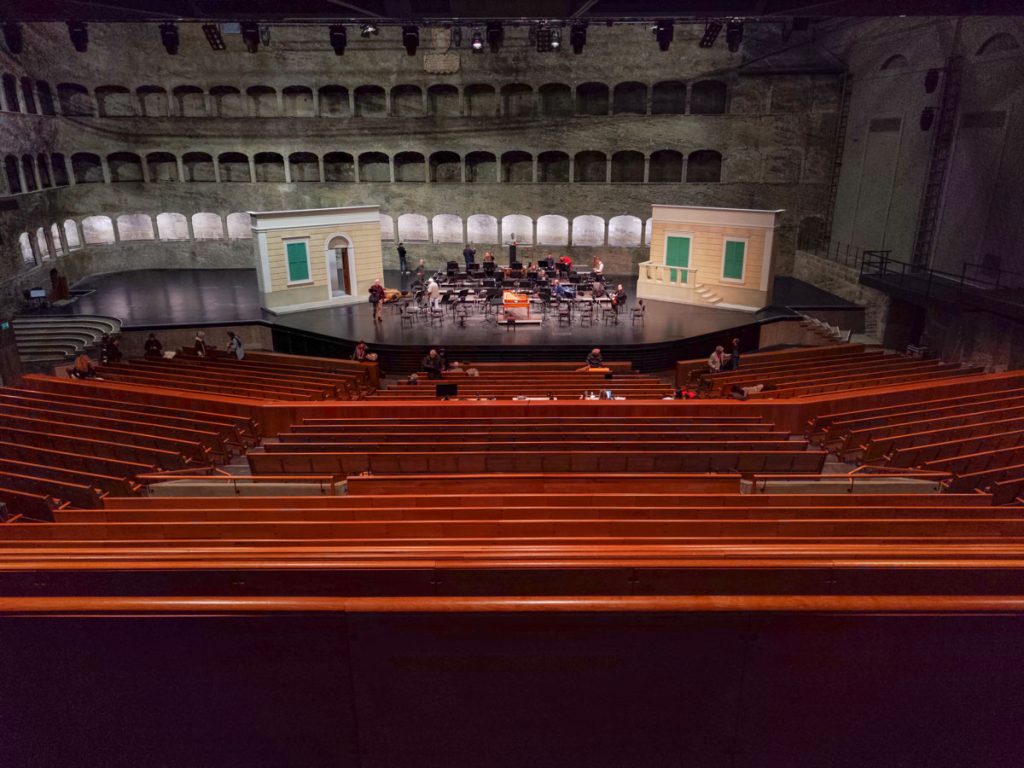How do we build a concert hall? We look for a free plot of land, preferably in a well-connected location, commission architects and acousticians, and ideally we should also have solid financing at hand if we don’t want the whole thing to blow up in our faces. That’s how things have been done for hundreds of years, and there have been no fundamental changes in the process.
And yet there are exceptions. Salzburg’s Felsenreitschule is such an exception, and a very special one at that. Built in 1693 as a riding arena and event location for the odd animal hunt in an abandoned quarry, it only found its current purpose in the early 20th century. In 1928, the first theater performance took place here as part of the Salzburg Festival, Max Reinhard created his legendary Faust production for the Felsenreitschule, and Karajan finally turned it into an opera stage with performances of Gluck’s Orpheus in 1949.
To make the place playable, it lacked a stage, a proper audience area, and a roof. The stage was created by reversing the roles: the arcades carved into the rock, which once served as spectator stands, henceforth functioned as a picturesque natural backdrop, and the huge and asymmetrical stage was created directly in front of it. The auditorium was redesigned several times; in its current form it can seat almost 1500 people. The roof, too, has undergone several stages of evolution, from non-existent to tent to its current fixed form. The result is a tremendously exciting hall that can hardly be compared to any other.
As a musician, one is very divided about this hall. Yes, it is the Salzburg Festival, and yes, this room is special. And you can feel that. However, there are also some problems to contend with. The dressing rooms are far away in the subterranean bowels, you walk for quite some time until you finally reach the foot of the stage via two steep and poorly lit staircases, which you in turn climb via a circularly curved staircase. All this is no pleasure in evening dress, appropriate shoes, with dull lighting and with several hundred thousand euros in hand. The stage itself is difficult to illuminate evenly or to temper, as we got to experience once again just this January. Since you then have to contend with very difficult acoustics on stage due to missing acoustic elements (for example the typical sails above the stage), the sound disappears in all directions. The Result: You can see your colleagues, but you can hardly hear them. Well, that’s not always a pity. But most of the time it is not helpful.
For the audience, the picture is quite different: they get to hear a surprisingly complete and differentiated sound against an almost unbelievable backdrop, on consecrated ground to boot. And this is exactly what keeps us musicians going. Otherwise we would avoid this hall. But knowing this, we are always happy to be able to play there.
Music tips – recordings with a concert hall-typical sound
The Salzburg Festival publishes a large number of visual and audio recordings of the performances online at the “Salzburger Festspieldokumenten”
There are countless recordings from the Felsenreitschule there, quite incidentally also great music.


